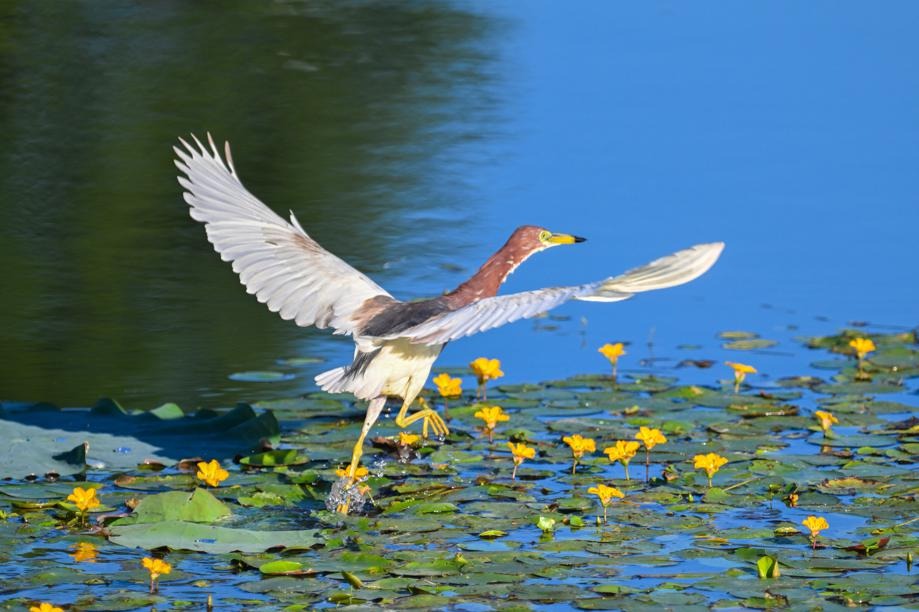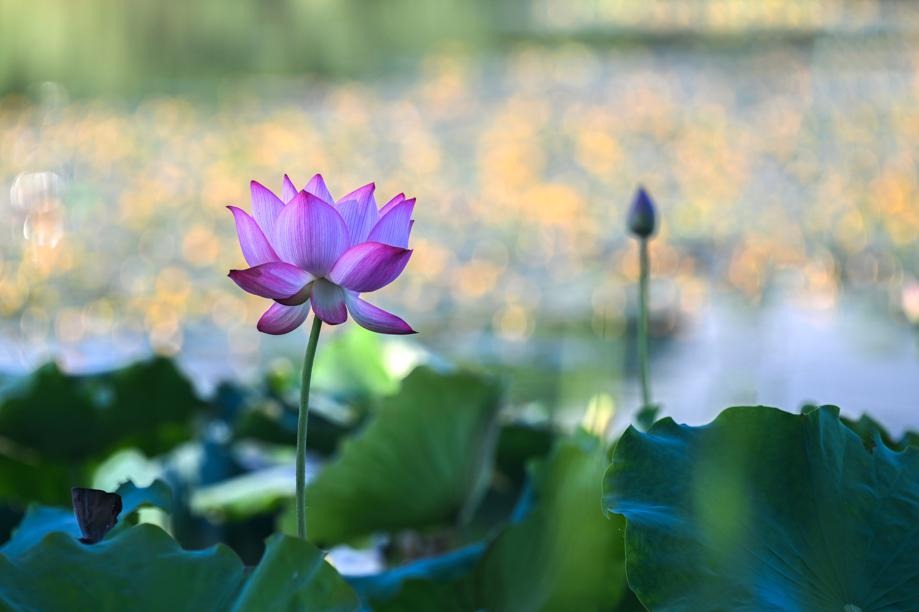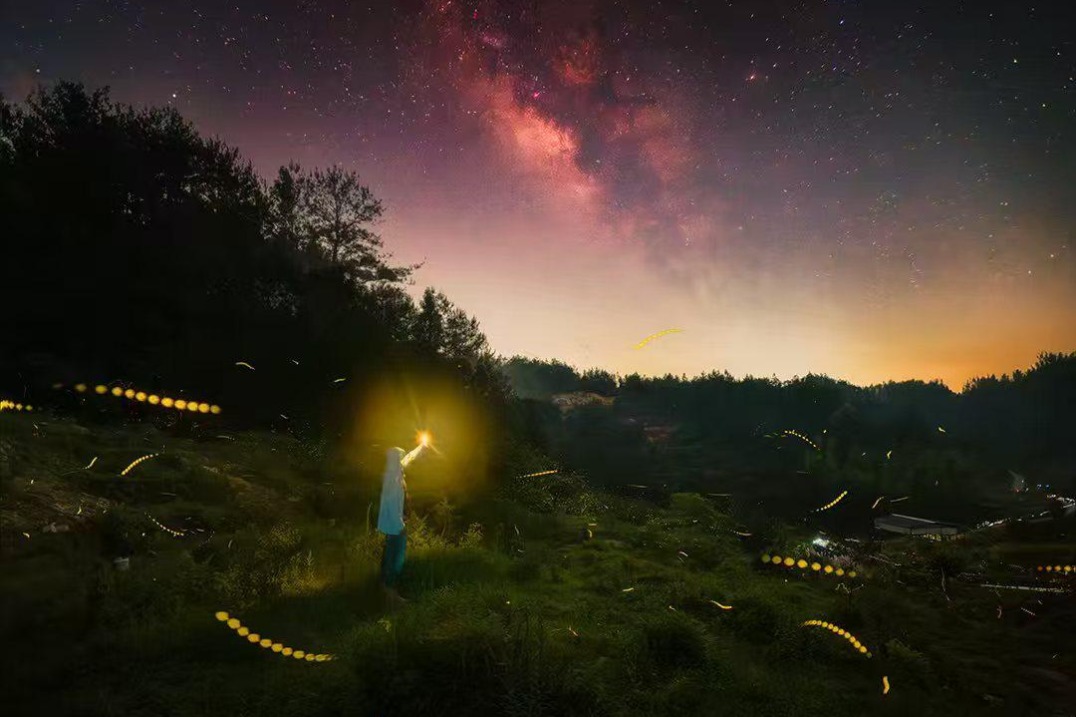Oriental stork numbers rise at national reserve
Three decades of efforts have placed nature sanctuary in Heilongjiang province firmly on birds' annual migratory routes

Three decades of efforts have placed nature sanctuary in Heilongjiang province firmly on birds' annual migratory routes
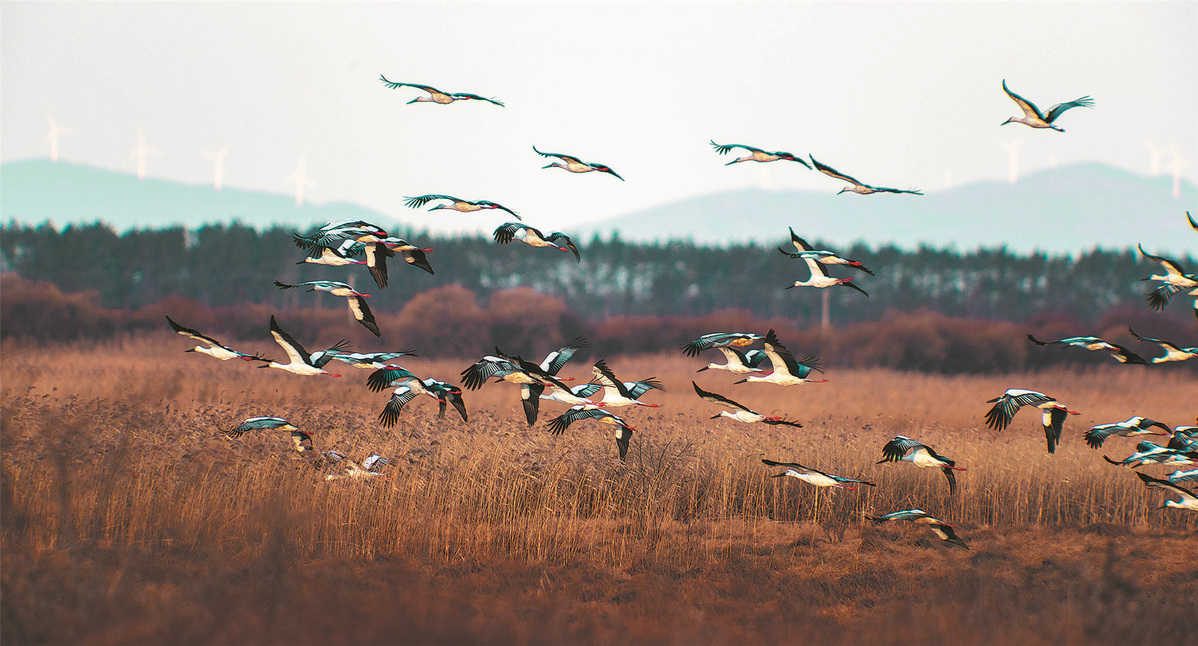
As the weather warms, flocks of migratory birds are beginning to arrive in the Honghe National Nature Reserve in Heilongjiang province, among them a group of Oriental white storks.
The reserve has so far sighted 166 of the storks, which are under national first-class protection and are listed as critically endangered on the International Union for Conservation of Nature Red List.
"As early as March 20, we spotted 20 birds in the reserve, around 10 days earlier than last year," said Zhu Baoguang, director of the reserve's publicity and education office.
"We expect to welcome around 100 pairs of Oriental white storks for breeding this year."
Zhu said the first flock returned from Poyang Lake after passing through several regions, including Tianjin and the provinces of Liaoning and Jilin.
"In the past, migration for breeding usually began in early April, but in recent years, the reserve has built new artificial bird nests to attract more Oriental white storks, and with the higher temperatures this spring, they returned earlier."
Covering 21,835 hectares, the reserve lies on a major migratory route between the Arctic and Southeast Asia.
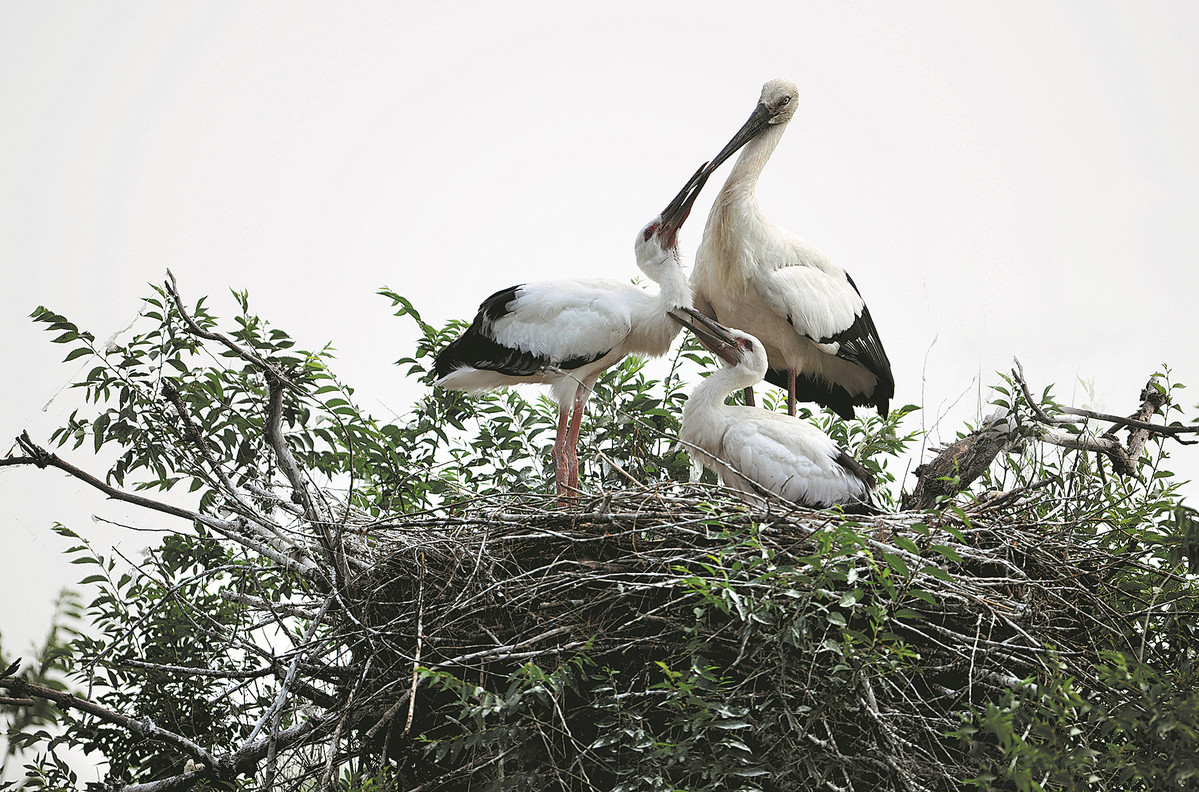
It's a stopover point and nesting area for a large number of species, including storks, swans, red-crowned cranes, white-naped cranes and white-headed cranes.
Most of the reserve is wetland and covers an area of 20,000 hectares, making it the largest primitive wetland on the Sanjiang Plain.
It is home to 236 bird species. Among them, 44 are under national protection and 121 are under international conservation.
The reserve is typical of others in the same global biobelt and is rich in biodiversity, which is of significant importance for conservation efforts.
To provide Oriental white storks with a more comfortable habitat, the reserve started building artificial bird nests in 1993, and over the past 30 years, around 2,000 storks have been born there.
"Oriental white storks like to nest on tall trees, and when the first 13 nests were made at the beginning of 1993, four stork couples came to breed," Zhu said. "It was a good start to restoring the reserve's wild population of storks."
Since then, the reserve has stepped up its efforts to maintain the nests and build new ones each year.
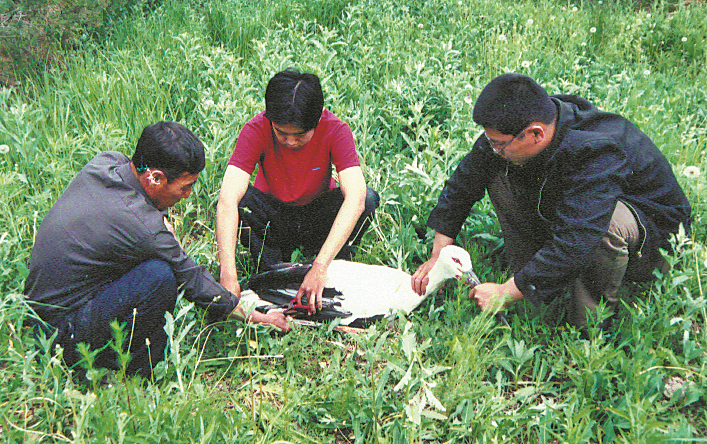
Learning from the experience gathered over the past three decades, reserve rangers have upgraded the structure of the nests and set them on high iron frames, which are more solid and safe.
Last year, 100 permanent artificial nests were built, and files for each, with detailed information such as their GPS locations, serial numbers and sizes, are included, enabling them to be managed scientifically.
The reserve has set up 389 bird nests to date, attracting 660 pairs of Oriental white storks, and has also undertaken in-depth research into their migration.
Since 2015, 100 Oriental white storks have been fitted with satellite trackers to accurately record their migration routes and wintering habitats in South Korea and the provinces of Jiangxi, Anhui, Jilin and Liaoning, which provide important data for the protection of the species as they breed, rest during migration and winter.
During seasonal migrations in spring and autumn, the reserve implements measures to ensure the birds' safety.
"We have made plans for field patrols and expanded routes in areas with high incidences of illegal activities that affect wildlife," Zhu said.
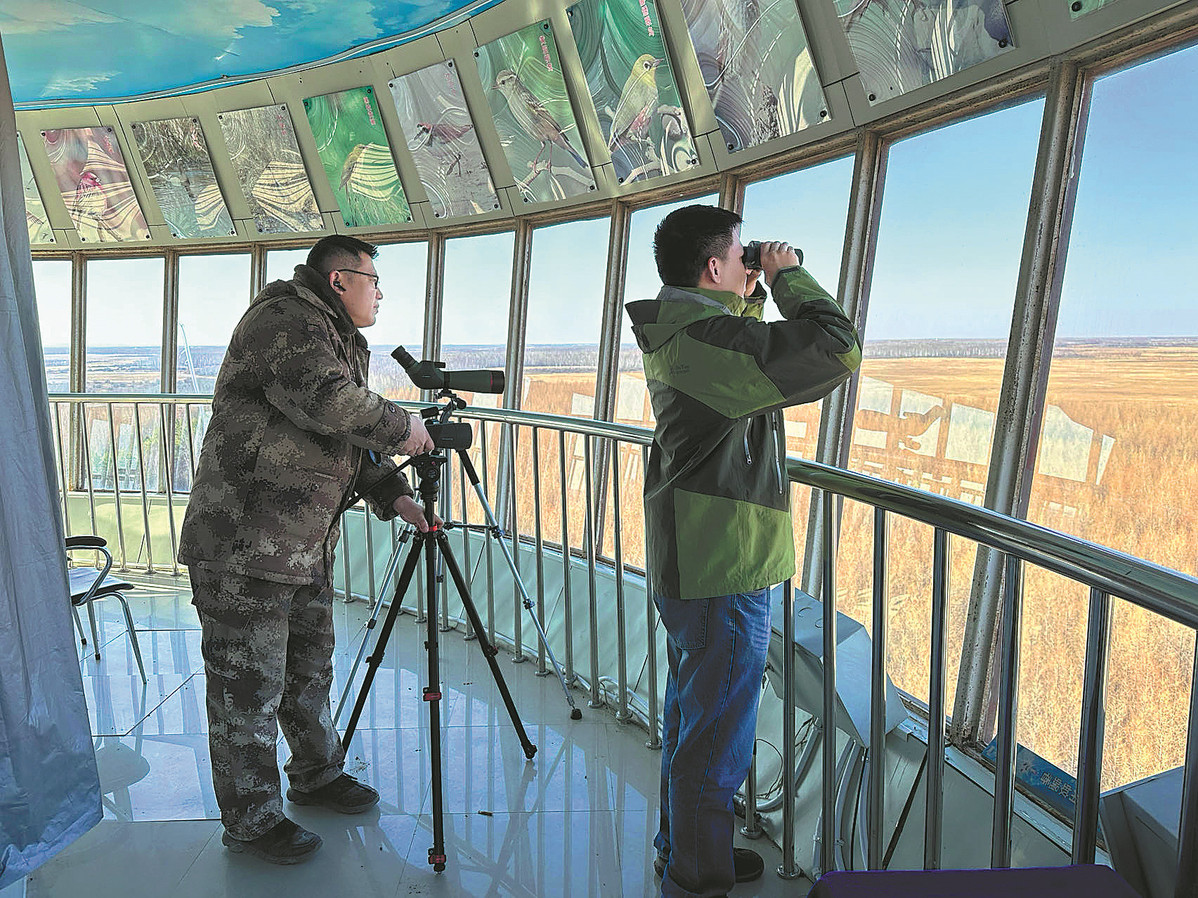
"We have also launched campaigns to remove animal traps."
He added that new methods such as video surveillance and drones are being used to improve protection.
Based on the distribution of birds and animals built up over the years, researchers monitor any abnormal wild animal deaths at the reserve, especially of birds.
They collect feces from waterfowl clusters that are analyzed to provide early warnings of potential outbreaks of bird flu or other animal diseases.
"On important days for wildlife protection, such as World Wildlife Day, World Environment Day and the International Day for Biological Diversity, we visit surrounding villages to teach the importance of wildlife conservation and tell people not to hunt," he said.
"Wildlife conservation requires the efforts of the whole of society."
zhouhuiying@chinadaily.com.cn
- Smart agriculture provides solutions for BRI countries
- Foreign experts, journalists explore China's cultural heritage
- Jiangxi county pioneers innovative rural development approach
- China's 'medicine capital' company goes fully automated
- Beijing prosecutors helping errant minors to get back on track
- Copyright Society of China wins approval to be observer of world intellectual property body

















